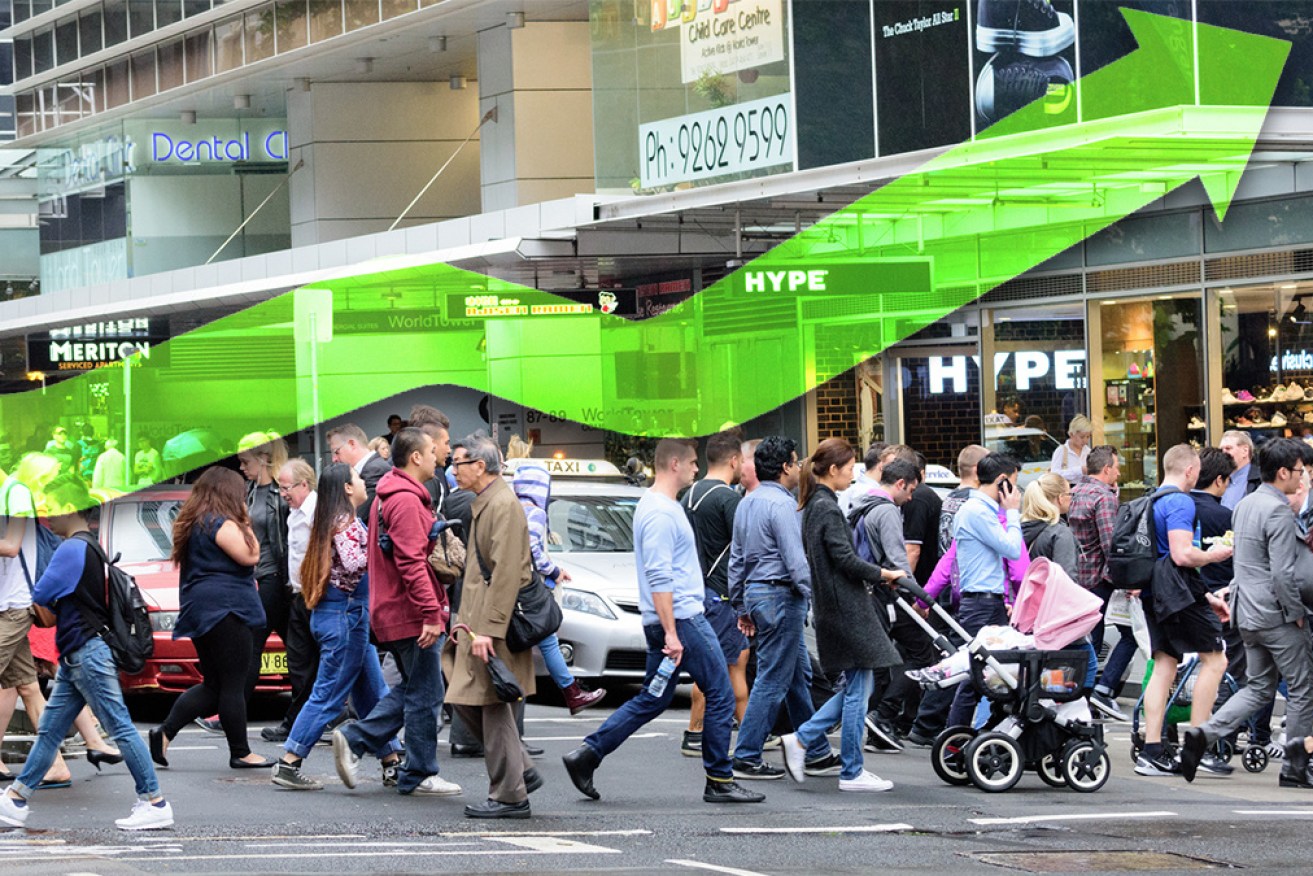Return to suburbs and online shopping define past year in retail


Retail turnover surged in the second half of the year. Photo: TND
The outlook was grim for Australian retailers at the beginning of the year.
Faced with mounting debt and little prospect of a decent pay rise, consumers cut back on spending just as physical shops were forced to compete with a growing list of online rivals.
‘For lease’ signs became a common sight on suburban shopping strips as each week brought a fresh spate of closures.
And then COVID-19 shut the doors of otherwise healthy businesses and forced people to work from home.
The retail outlook went from bad to worse. But the tide soon turned.
The announcement of wage subsidies and higher unemployment benefits at the end of March offered the industry a glimmer of hope.
And soon afterwards retailers were reporting record sales, during the worst recession since the 1930s.
It was a year like no other.

Economic stimulus supported strong retail spending in the second half of the year. Photo: AAP
The rise of online shopping
It’s impossible to talk about the past year in retail without noting the remarkable increase in online sales.
Consumers turned to their computers in droves after governments told them to stay at home, with data from National Australia Bank revealing Australians spent $42.2 billion on online retail in the 12 months to October.
That was up 41.2 per cent on the same period in 2019, and came before the Black Friday and Cyber Monday sales.
“In fact, the surge in online that has occurred in the past eight or nine months was previously predicted to have taken around five years – so it has really shifted very significantly in a very short space of time,” said Dr Louise Grimmer, a senior lecturer in the Tasmanian School of Business and Economics.

Online shopping surged as Australians avoided large crowds.
A big question remains, though: How much of the recent shift to online is permanent?
A survey conducted by L.E.K. Consulting on behalf of Infrastructure Australia suggests a fair chunk.
“The L.E.K. survey found that respondents were more likely to not return to past habits in relation to shopping precincts,” IA said in its report.
“This trend is in line with aversion to crowded shopping centres and low appetite for public transport commuting to shopping hubs.”
Retail Doctor CEO Brian Walker, meanwhile, said online shopping as a share of overall retail turnover had risen from 9 per cent to about 12 or 13 per cent during the pandemic.
This will fall back to 10 or 11 per cent once the economy normalises, but people will continue researching products online before buying in store, he said.
“Two or three years ago, we used to say over 85 per cent of all shoppers pre-researched big-ticket items online,” Mr Walker told The New Daily.
“Now, that’s true pretty well of all categories, with the exception of groceries. That shift is permanent, but the shopping experience is transitory.”

The working-from-home boom gave a boost to suburban retailers. Photo: Getty
The power of stimulus
Massive government intervention was another major story this year.
The retail industry was one of the hardest hit during the early stages of the pandemic, with fearful households tightening their belts and restrictions forcing most shops to close.
But for many outlets the pain was temporary.
Increased unemployment benefits enabled low-income earners to stock up on essentials, replenishing the cash registers of nervous shop owners. And higher-income households spent big on household goods and electronics to make their lockdowns more bearable.
As the federal government got to work pumping billions of direct support into the economy, national retail turnover surged.
In July, sales were up 12.2 per cent on the same time last year as JB Hi-Fi, Kogan and Harvey Norman all reported bumper sales.
And this trend continued into November, with sales for the month up 13.2 per cent year on year.
“Pleasingly, we are seeing really strong results in terms of spending during the Christmas period,” Dr Grimmer said.

Retail turnover surged in the second half of the year.
The winners and losers
Not all retailers did well during the pandemic, though.
Dr Grimmer said the winners of the pandemic included suburban shops, big-name retailers and businesses that were “already well placed in the online space”.
“During lockdown, large national retailers provided consumers with the goods and services they demanded via their online stores and we’ve seen incredible sales figures for some very well-known retail brands this year,” she told The New Daily.
“At the same time, consumers were really switched on when it came to wanting to support small local stores.
“Many of these smaller retailers really had to pivot very quickly to get up online during lockdown and we’ve certainly seen a huge movement this year to shop small and shop local.
“Many smaller stores have reported great success this year, which is fantastic.”
Perhaps unsurprisingly, Dr Grimmer said the retailers hit hardest by the pandemic were those that failed to make the shift online, as well as those with too many outlets or shops in the wrong location.
Mr Walker added that fashion and service-based retail had struggled during the pandemic.
Tweet from @euanblackwrites
Where to now?
With office workers likely to work from home at least two days a week for the foreseeable future, Dr Grimmer said suburban shops were likely to rebound strongly in 2021 while inner-city stores would falter.
Meanwhile, Mr Walker said businesses that integrate their online and physical offerings stood the best chance, as consumers prefer to make major purchases in store and turning a profit online requires economies of scale.








